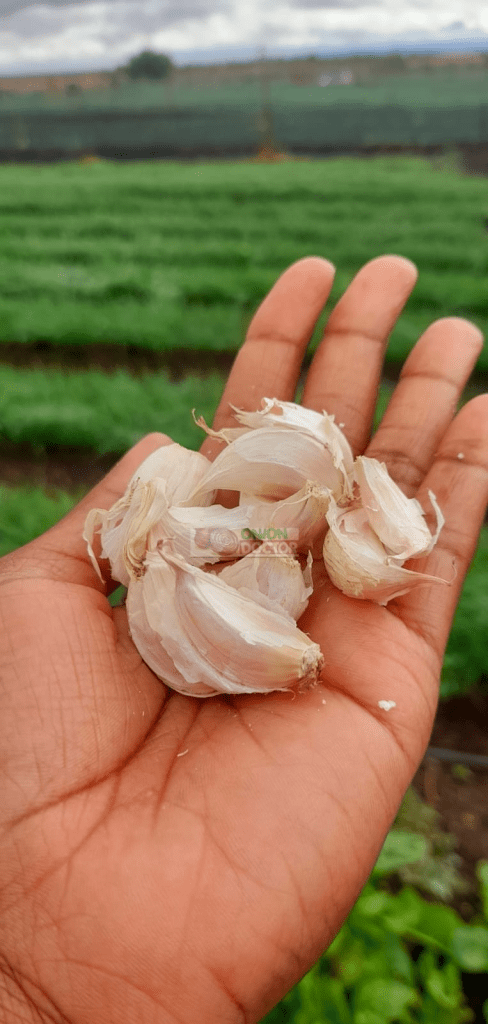Welcome to the thrilling underground saga of nematodes in garlic farming! If you thought garlic farming in Kenya was just about planting cloves and harvesting bulbs, think again. These microscopic worms are the unsung heroes and villains of the soil, waging a hidden war beneath your garlic beds. Garlic farming in Kenya, with its rich, pungent bulbs, faces unique challenges from these tiny terrors. Whether you’re a farmer in Nyeri or a garlic enthusiast worldwide, this blog will take you on a wild ride through the world of nematodes, sprinkled with humor, science, and practical tips. Garlic farming in Kenya is booming, but nematodes can make or break your harvest. From their sneaky attacks to clever ways to outsmart them, we’ll explore it all. Ready to dive into the soil? Let’s make garlic farming in Kenya nematode-free and fun! Oh, and did we mention garlic farming in Kenya? It’s kind of a big deal.

NEMATODES IN GARLIC FARMING
Nematodes are tiny, thread-like worms that live in soil, water, and even inside plants. Most are harmless, some are beneficial, but others are the bad boys of garlic farming in Kenya. These plant-parasitic nematodes, like stem and bulb nematodes (Ditylenchus dipsaci) and root-knot nematodes (Meloidogyne spp.), love to feast on garlic roots and bulbs, causing chaos in your crop.

TYPES OF NEMATODES THAT AFFECT GARLIC PLANTS
- Ditylenchus dipsaci(Stem and Bulb Nematode)
- Most destructive in garlic; invades bulbs and stems, causing rot.
- Meloidogyne spp.(Root-knot Nematodes)
- Cause galls or knots on roots, reducing nutrient uptake.
- Pratylenchus spp.(Lesion Nematodes)
- Burrow into roots, causing dark lesions and decay.
- Tylenchorhynchus spp.(Stunt Nematodes)
- Damage root tips and cause stunted growth.
SIGNS AND SYMPTOMS OF NEMATODES IN GARLIC
ABOVE GROUND SYMPTOMS:
- Stunted plant growth
- Yellowing or pale leaves
- Wilting during hot or dry periods
- Uneven or patchy field growth
- Delayed maturity
BELOW GROUND/BULB SYMPTOMS:
- Spongy, discolored or rotting bulbs (common with Ditylenchus dipsaci)
- Bulb cloves may separate or split
- Brown lesions on roots or bulb base
- Poor root system — shortened or decayed roots
- Presence of root knots/galls (Meloidogyne spp.)
- Plants pull up easily due to damaged roots

CONDITIONS THAT FAVOUR NEMATODE INFESTATION IN GARLIC
- Warm Soil Temperatures (20°C to 30°C)
- Light, Sandy or Loamy Soils — easier movement for nematodes
- Continuous Garlic or Onion Cropping — no rotation
- Moist, Poorly Drained Soils — supports nematode survival
- Use of Infected Seed Garlic
- Low Soil Organic Matter — fewer beneficial microbes to suppress nematodes
- Over-irrigation or flooding during early growth stages
MANAGEMENT STRATEGIES OF NEMATODES IN GARLIC FARMING
1.CROP ROTATION:
Nematodes hate change. Rotate garlic with non-host crops like maize, sorghum, or mustard. Mustard and sorghum-Sudan grass release bio-fumigants that zap nematode populations. In Kenya, farmers in Kiambu use this trick to keep their garlic beds nematode-free.
- Pro Tip: Avoid planting garlic after onions or leeks—they’re nematode magnets!
2. USE CLEAN SEEDS:
Use certified, nematode-free garlic cloves from reputable suppliers like Onion Doctor. Hot water treatment (50°C for 20 minutes) can also kill nematodes hiding in cloves.

3.MULCHING:
Mulching with straw or paper covers suppresses weeds and keeps soil cool, making it less cozy for nematodes.

4.BIO FUMIGANTS:
Plant cover crops like marigolds or mustard before garlic. These release chemicals that nematodes can’t stand. In a study, marigolds reduced Pratylenchus populations in vegetable farms.
5. DRIP IRRIGATION:
Nematodes love soggy soil. Drip irrigation, popular in Nakuru, delivers water directly to garlic roots, keeping the soil just right. Overwatering can stress garlic and invite nematodes, so keep it balanced.

6. SOIL AMENDMENTS:
Add organic manure or compost to boost beneficial microbes that prey on nematodes. In groundnut farms in Kenya, farmyard manure reduced nematode abundance. Try this in your garlic beds for a healthy, nematode-resistant soil.
7.SOLARIZATION:
Cover your soil with clear plastic for 4–6 weeks during the hot season. The heat traps and kills nematodes.
Onion Doctor Limited: advises Kenyan farmers to tailor these strategies to local conditions and consult our experts for customized plans, including soil testing and pest identification and management services. Contact us for: Onion seedlings, Garlic seedlings, Germinated garlic cloves, Farm planning services, Soil testing, training on onion and garlic growing, Drip irrigation installation and maintenance, Agronomic support, Onion and Garlic value pack and Farm management. For free consultation, placing orders or booking a visit with an agronomist, please contact us via Call or what’s app +254703982228, Email: Info@oniondoctor.co.ke. You can also check out our social media handles for daily updates on TikTok: https://www.tiktok.com/@oniondoctorke?_t=ZM-8wmsTu0qumO&_r=1 Instagram: https://www.instagram.com/oniondoctorke?igsh=MTVoaHF3aWUydTJzaQ==Facebook:https://www.facebook.com/share/16SwgYn2dG/ Youtube:https://youtube.com/@oniondoctorke?si=u5Jnd-r0qU9UDYqL and Twitter: https://x.com/OnionDoctorKe?t=FR3JXlS_oN1vjjUgAtfyzg&s=09